South America is renowned for its rich biodiversity, from the dense Amazon rainforest to the expansive grasslands of the Pampas. Within this diverse landscape, a plethora of mammalian species thrive, ranging from the small and elusive to the impressively large. In this article, we delve into the world of South America’s largest mammals, exploring their habitats, behaviors, and significance within the continent’s ecosystems.
The term “megafauna” refers to the largest animal species within a particular ecosystem. In South America, these megafauna play crucial roles in maintaining ecological balance and are often emblematic of the continent’s natural heritage. From towering giants of the rainforest to majestic marine mammals along the coast, South America’s largest mammals encompass a diverse array of species adapted to various habitats and environmental conditions.
South America’s 10 Largest Mammals
1. South American Tapir (Tapirus terrestris)
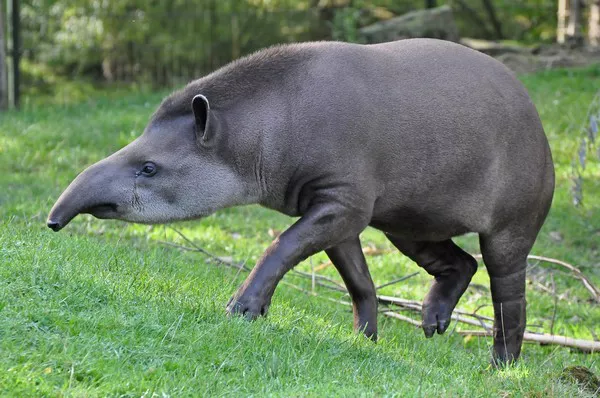
The South American tapir, also known as the Brazilian tapir, is the largest land mammal in South America and one of the most iconic inhabitants of the region’s tropical forests. With a bulky build and distinctive prehensile trunk, tapirs are well-adapted to their forest habitat, where they play essential roles as seed dispersers and ecosystem engineers. Despite their large size, tapirs are elusive and mainly nocturnal, feeding on a diet of fruits, leaves, and aquatic vegetation. Threatened by habitat loss and hunting, conservation efforts are underway to protect these remarkable creatures and their forest homes.
2. South American Giant Anteater (Myrmecophaga tridactyla)
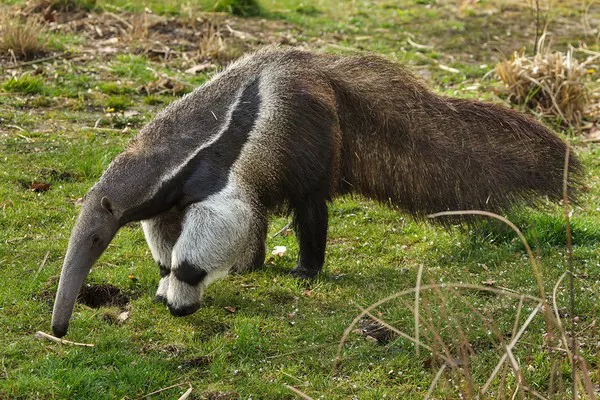
The South American giant anteater is a unique and charismatic mammal known for its long snout, bushy tail, and distinctive coat pattern. As the largest anteater species in the world, it primarily inhabits grasslands, savannas, and wetlands across South America. Using its elongated snout and powerful forelimbs, the giant anteater feeds primarily on ants and termites, using its sticky tongue to extract insects from their nests. Despite its formidable appearance, the giant anteater is vulnerable to habitat loss and road mortality, highlighting the importance of conservation efforts to protect this iconic species.
3. South American Jaguar (Panthera onca)
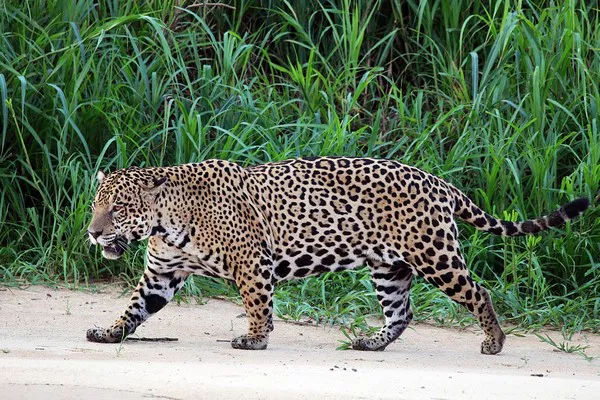
The South American jaguar, also known as the American jaguar, is the largest big cat species in the Americas and a formidable apex predator in its native habitats. With its muscular build, powerful jaws, and distinctive rosette-patterned coat, the jaguar is revered as a symbol of strength and stealth. Found primarily in dense rainforests, wetlands, and grasslands, jaguars are opportunistic hunters, preying on a variety of species, including deer, peccaries, and caimans. Despite being revered by indigenous cultures, jaguars face significant threats from habitat loss, poaching, and human-wildlife conflict, underscoring the need for conservation initiatives to protect these majestic felines.
4. South American Manatee (Trichechus inunguis)
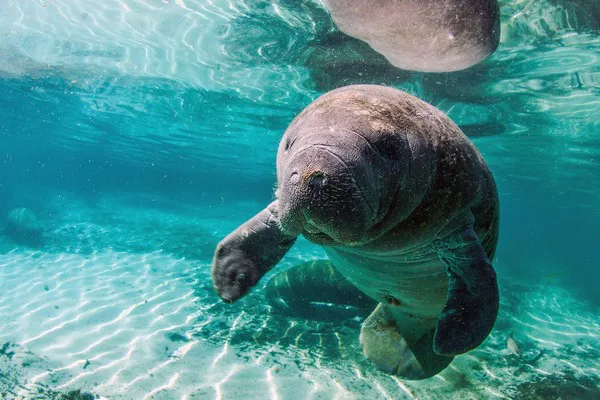
The South American manatee, also known as the Amazonian manatee, is a gentle giant of South America’s waterways, renowned for its docile nature and herbivorous diet. As the smallest of the three manatee species, the South American manatee primarily inhabits freshwater rivers, lakes, and flooded forests throughout the Amazon Basin. With its paddle-like flippers and rounded body, manatees are well-adapted to their aquatic lifestyle, feeding on aquatic vegetation and basking in the sun along riverbanks. Despite being protected by conservation measures, manatees are threatened by habitat degradation, boat collisions, and accidental entanglement in fishing gear, highlighting the need for ongoing conservation efforts to safeguard these vulnerable mammals.
5. South American Giant Otter (Pteronura brasiliensis)
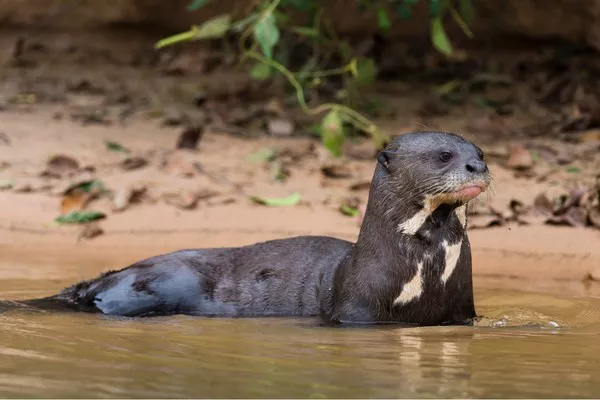
The South American giant otter is a charismatic and highly social mammal known for its playful behavior and sleek, streamlined physique. As the largest otter species in the world, it primarily inhabits freshwater habitats, including rivers, lakes, and swamps, throughout the Amazon Basin and adjacent regions. With its webbed feet, waterproof fur, and sharp claws, giant otters are well-adapted to their aquatic lifestyle, hunting fish, crustaceans, and other aquatic prey. Despite facing threats from habitat loss, pollution, and poaching, giant otters are revered by indigenous communities and conservationists alike, symbolizing the beauty and diversity of South America’s waterways.
6. South American Brown Brocket (Mazama gouazoubira)
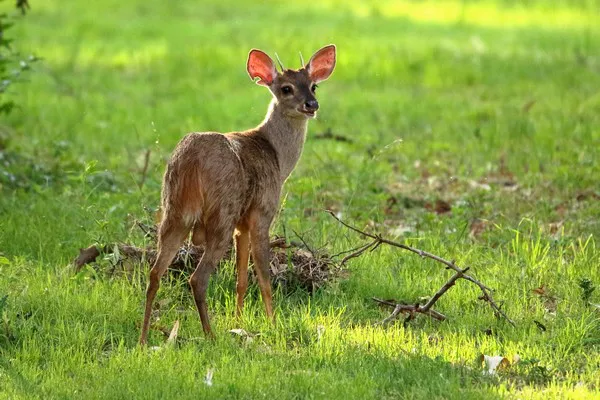
The South American brown brocket, also known as the red brocket deer, is a medium-sized deer species found throughout South America’s forests, grasslands, and scrub habitats. With its reddish-brown coat, slender build, and distinctive white markings, the brown brocket is well-adapted to navigating dense vegetation and evading predators. As a herbivorous species, brown brockets primarily feed on leaves, fruits, and tender shoots, using their keen senses to detect potential threats. Despite being relatively common in many areas, brown brockets face threats from habitat loss, hunting, and human disturbance, necessitating conservation efforts to ensure their long-term survival.
7. South American Lowland Tapir (Tapirus terrestris)
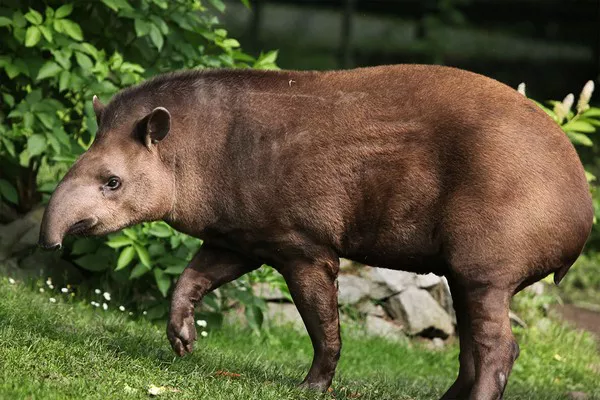
The South American lowland tapir, a close relative of the South American tapir, is a widespread and ecologically important mammal found throughout the continent’s diverse habitats. With its thickset body, short legs, and distinctive trunk, lowland tapirs are well-adapted to traversing dense vegetation and foraging for food. As herbivorous browsers, tapirs play essential roles in seed dispersal and forest regeneration, contributing to the health and resilience of their ecosystems. Despite being classified as vulnerable to extinction, lowland tapirs benefit from protected areas and conservation initiatives aimed at preserving their habitat and mitigating threats from habitat loss and poaching.
8. South American Spectacled Bear (Tremarctos ornatus)
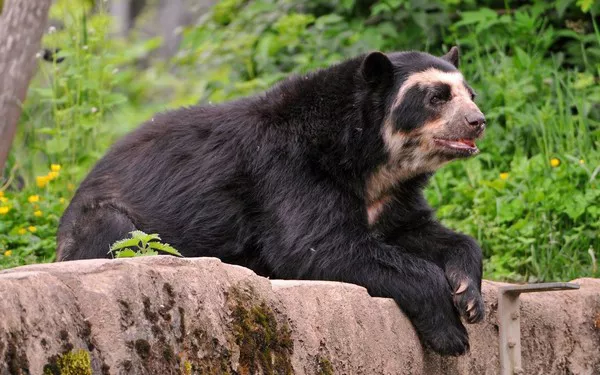
The South American spectacled bear, also known as the Andean bear, is the only bear species native to South America and one of the continent’s most elusive and enigmatic mammals. With its distinctive facial markings and shaggy fur, spectacled bears primarily inhabit montane forests, cloud forests, and páramo grasslands throughout the Andes Mountains. As omnivorous creatures, spectacled bears feed on a variety of foods, including fruits, insects, and small mammals, utilizing their strong claws and keen sense of smell to locate food sources. Despite facing threats from habitat fragmentation, human-wildlife conflict, and illegal hunting, spectacled bears are revered by indigenous cultures and conservationists alike, symbolizing the wild and rugged beauty of South America’s mountainous landscapes.
9. South American Gray Brocket (Mazama gouazoubira)
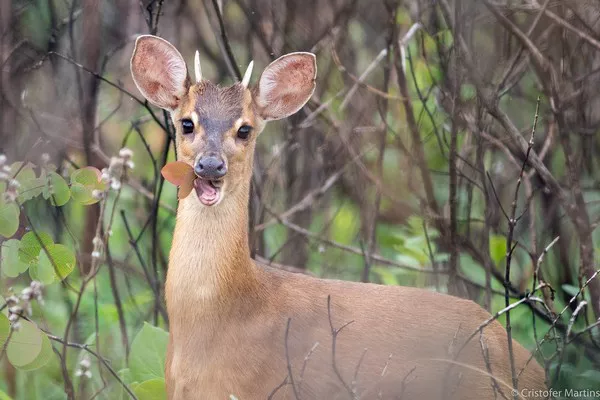
The South American gray brocket, also known as the gray brocket deer, is a small deer species found throughout South America’s forests, grasslands, and scrub habitats. With its grayish-brown coat, slender build, and agile movements, the gray brocket is well-adapted to navigating dense vegetation and avoiding predators. As a herbivorous species, gray brockets primarily feed on leaves, fruits, and tender shoots, utilizing their keen senses to detect potential threats. Despite being relatively common in many areas, gray brockets face threats from habitat loss, hunting, and human disturbance, highlighting the need for conservation efforts to ensure their long-term survival.
10. South American Puma (Puma concolor)
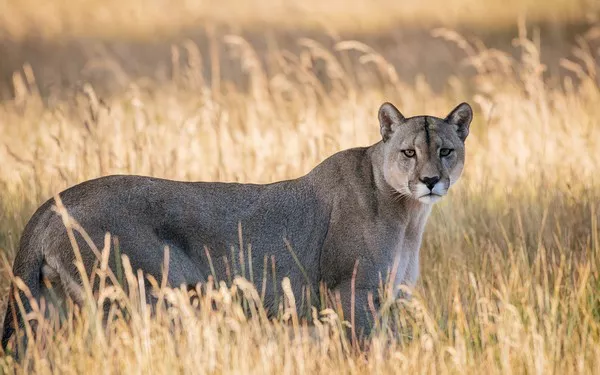
The South American puma, also known as the cougar or mountain lion, is a large and powerful predator found throughout South America’s diverse landscapes, from dense forests to arid plains. With its muscular build, keen eyesight, and stealthy hunting prowess, the puma is a formidable apex predator capable of taking down prey much larger than itself. Despite being solitary and elusive creatures, pumas play crucial roles in maintaining ecosystem balance by controlling prey populations and shaping community dynamics. However, pumas face threats from habitat loss, human-wildlife conflict, and retaliatory killings, underscoring the importance of conservation efforts to protect these majestic cats and their habitats.
Conclusion
South America’s largest mammals encompass a diverse array of species, each with its unique adaptations, behaviors, and ecological roles. From the towering tapirs of the rainforest to the sleek otters of the Amazon River, these megafauna play crucial roles in maintaining ecosystem balance and preserving the continent’s natural heritage. Despite facing threats from habitat loss, hunting, and human disturbance, conservation efforts are underway to protect these iconic species and ensure their long-term survival in the face of environmental challenges. By raising awareness and implementing targeted conservation strategies, we can safeguard South America’s largest mammals for future generations to appreciate and admire.
You Might Be Interested In:



























